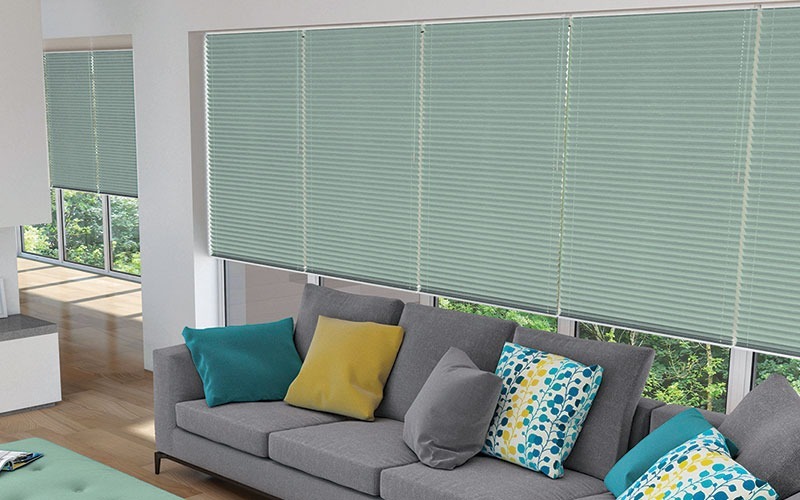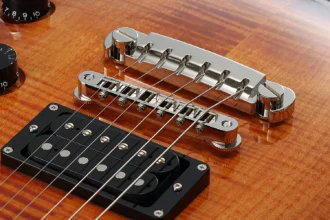Window treatments are a critical element in home design, serving roles far beyond simple decoration. They manage light, privacy, and most importantly, energy efficiency. While single-layer blinds have their place, the modern, performance-focused home demands a superior solution. This is where double pleated blinds, often referred to as cellular or honeycomb blinds, enter the conversation as the smart choice for discerning homeowners. Their unique, dual-layer construction sets them apart, offering unparalleled insulation and sophisticated style. Making the right selection, however, requires careful consideration of various factors—from cell size to fabric type—to maximize the investment. Here are the expert tips you need for choosing the perfect double pleated blinds for your home.
Understanding the Insulating Power of Double Pleated Blinds
The core feature that elevates double pleated blinds above other window coverings is their cellular design. The fabric is layered to create distinct, hexagonal air pockets—much like a honeycomb—that run horizontally across the blind. The “double” pleated construction means there are two layers of these cells, creating two separate air barriers. This innovative structure traps air within the pockets, which acts as a powerful insulator. This thermal barrier significantly slows the transfer of heat through the window, making your home cooler in the summer and warmer in the winter. This superior thermal performance is the number one reason to choose double pleated blinds as an energy-saving investment. Get your blinds from topelt plisseeritud rulood.
Cell Size Matters: Single, Double, or Triple?
While the focus keyword is double pleated blinds, it’s important to understand the relationship between cell size and insulation. Cell size refers to the depth of the honeycomb structure. While standard cellular blinds are available in single, double, and even triple cell constructions, the double-cell design strikes the best balance between insulation value and visual profile. Deeper or triple-cell constructions offer maximum insulation, making them ideal for extreme climates or for large, poorly insulated windows. However, double pleated blinds provide excellent R-value (a measure of thermal resistance) without appearing bulky or obscuring the view excessively when retracted. Assess your climate and window efficiency to determine the most effective cell count.
Opacity Levels: Light Filtering vs. Blackout
The functionality of your double pleated blinds will heavily depend on the opacity you choose for each room. Light filtering options are ideal for living areas, dining rooms, and kitchens. These fabrics diffuse harsh daylight, eliminating glare while still allowing soft, natural illumination to permeate the space. They provide daytime privacy without making the room feel dark. Conversely, blackout double pleated blinds are essential for bedrooms, nurseries, and media rooms. They feature a foil or Mylar lining inside the honeycomb cells that completely blocks light transmission, ensuring total darkness and maximum privacy for restful sleep or viewing comfort.
Operation Systems: Safety and Convenience
The operating system of your double pleated blinds is crucial for daily convenience and safety. Traditional corded systems offer standard operation but pose a safety hazard in homes with children or pets. Modern, preferred options include the cordless system, which allows the blind to be raised or lowered by gently pushing or pulling the bottom rail, making it extremely child-safe. Motorized double pleated blinds offer the pinnacle of convenience, allowing operation via a remote, wall switch, or integrated smart home app, perfect for high or hard-to-reach windows. Consider your family’s needs and the frequency of use when selecting the lift mechanism.
The Top-Down/Bottom-Up Innovation
A truly versatile feature often available with double pleated blinds is the top-down/bottom-up control. This mechanism allows you to lower the blind from the top and raise it from the bottom. This flexibility is a game-changer for maintaining privacy while maximizing natural light. For example, you can lower the top portion of the blind to let light stream in while keeping the bottom covered to block the view from the street. This innovative solution ensures you never have to sacrifice daylight for privacy, making your double pleated blinds highly adaptable to any time of day or urban setting.
Color and Texture: Integrating Aesthetics
While function is important, the aesthetic appeal of your double pleated blinds should not be overlooked. The vast array of colors and textures available allows them to be seamlessly integrated into any interior design scheme. Light, neutral colors (creams, whites, and pale grays) are excellent for reflecting light and maintaining a clean, airy look, and they tend to have better light-reflecting insulation properties. Deeper tones can add drama and warmth. Furthermore, some fabrics mimic the texture of linen or silk, adding subtle sophistication to the smooth surface of the double pleated blinds without adding unnecessary bulk.
Measuring and Installation: Precision is Key
The thermal efficiency of your double pleated blinds relies heavily on a precise fit. Any gaps around the edges of the window allow air transfer, undermining the insulating cellular structure. Therefore, expert measurement is critical, especially for inside-mount installations where the blinds sit snugly within the window frame. Whether you choose to measure yourself or hire a professional, ensure measurements are taken at three points across the width and height, accounting for the shallow mounting depth typically required by cellular blinds. Precision in installation guarantees maximum effectiveness and a polished, professional look.
Maintenance and Longevity
One of the practical benefits of choosing high-quality double pleated blinds is their low maintenance. The anti-static treatment applied to most modern fabrics helps repel dust. Most routine cleaning simply involves light dusting or a gentle vacuuming with a brush attachment. Avoid harsh chemicals or excessive moisture, as this can compromise the cellular structure and the internal lining. Given their durable construction, well-maintained double pleated blinds offer a lifespan of many years, solidifying their status as a worthwhile long-term investment in your home’s comfort and value.
Comparing Against Other Window Treatments
When weighing your options, note that while wooden blinds offer a classic look and roller blinds offer simplicity, neither can match the thermal performance of double pleated blinds. The honeycomb structure is unique in its ability to manage both heat gain and heat loss simultaneously. This superior insulating quality is the key differentiating factor, making the cellular structure the premier choice for energy-conscious consumers looking for the best performance from their window treatments.
For more details:-
Solemlux
Conclusion: Making the Ultimate Choice for Comfort
In conclusion, the decision to invest in double pleated blinds is a decision to upgrade your home’s functionality, energy efficiency, and overall comfort. By moving beyond simple aesthetics and focusing on the crucial aspects of cell structure, opacity, and operating mechanism, you can select a product that perfectly meets your needs. Whether you prioritize total darkness in the bedroom, daylight control in the living room, or significant savings on your energy bills, the tailored options within the double pleated blinds category offer a robust and elegant solution. Choose wisely, prioritize quality and precision installation, and enjoy the lasting benefits of a comfortable, energy-efficient, and beautifully styled home.

















![Exploring the Life and Legacy of len pullen: A Trailblazer in [Field/Industry]](https://reelsmedia.co.uk/wp-content/uploads/2025/02/len-pullen-2-330x220.jpg)